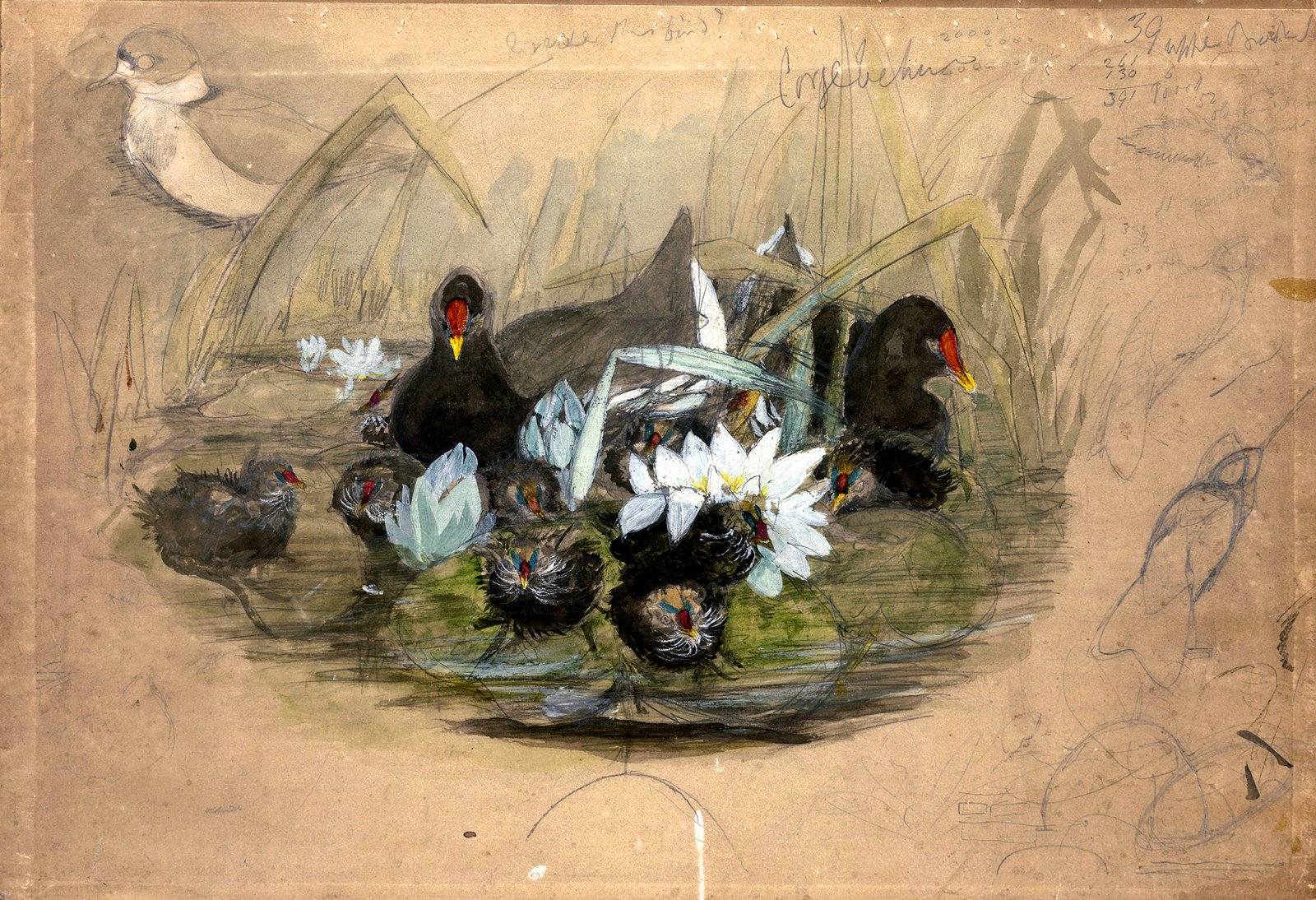John Gould the artist

© Australian Museum
How much art did John Gould actually do?
Contrary to what might be believed from the works that bear his name, John Gould was no great artist. He was excellent at describing bird species but struggled to represent them on the page. Although his drawings in pencil, ink, chalk and broad colour wash reveal a quickness and boldness that often capture the very essence of a bird's characteristics, they are never more than rough sketches. As if to compensate for his technical shortcomings, Gould often annotated his work with colour notes and instructions for his artists to follow.
Historians debate over the extent to which Gould took credit for the illustrations in his publications. However, there is strong evidence that Gould was closely involved with the development of each illustration. His corrections are often found at different stages of the plate preparation. Gould was quite prepared to admit to his colleagues and associates that he was not the sole creator of these works. In 1841, only weeks after the death of his wife Elizabeth Gould (his primary illustrator and lithographer for the first ten years of his career), Gould writes:
I am happy to say that I am getting my Birds beautifully drawn by other artists and as I have always and I shall continue to make the sketches. John Gould in a letter to H.E. Strickland dated 13 October 1841
Creating the Moorhen in The Birds of Great Britain
This preparatory sketch for the Moorhen (Gallinula chloropus) in The Birds of Great Britain is attributed to John Gould. The image has been hastily sketched on the back of an old board and is perhaps Gould's first attempt at communicating his rough composition. Josef Wolf provided the finished illustration.

© National Library of Australia

Published lithograph of Moorhen and chicks for 'The Birds of Great Britain' by Josef Wolf, c.1862.
Image: Leone Lemmer© Research Library
John Gould's 'plate formula'
By the end of the 1840s, Gould had established a 'plate formula' in his folio works: each plate depicted the male and female of the species. In the case of large birds the male and female were shown on consecutive plates. Similarly plumaged birds across the sexes were given both a dorsal and ventral view and, if available, the plate might include a nest with eggs or chicks in it. Once the finished watercolour had been approved by Gould, it was then ready to be copied onto a lithographic stone with a greasy crayon.
The Gould 'Factory'
Almost all the functions relating to the John Gould publishing and taxidermy businesses were undertaken from his home. For 50 years, his residence was a hive of activity.
From his home at Golden Square, Soho, and later from his home and office near the British Museum, he directed his international group of specimen collectors, describing and trading the birds and mammals they sent to him. While living with his six children, Gould created preliminary sketches for his books, oversaw the work of his artists and lithographers, supervised the printing and hand-colouring of the illustrated plates and administered the promotion, sale and distribution of the finished book parts. Gould could not have achieved this without the assistance of his secretary Edwin Charles Prince.

A recreation of Gould's workroom.
Image: Australian Museum© © Australian Museum
Gould's artists
John Gould was more skilled as an entrepreneur and businessman than as an artist. He relied on a group of dedicated artists, lithographers and colourers to translate his preparatory sketches into finished illustrations. Yet during his lifetime and beyond, Gould has often been represented as the sole creator of the thousands of plates published in his books.
The main artists and lithographers employed by Gould to produce his works were:
- Elizabeth Gould
- Edward Lear
- Henry Constantine Richter
- William Matthew Hart
- Josef Wolf
- Gabriel Bayfield (Gould's colourist)
A number of these artists are considered the finest practitioners of natural history art in the 19th century.








